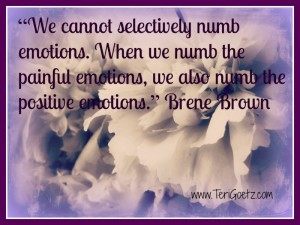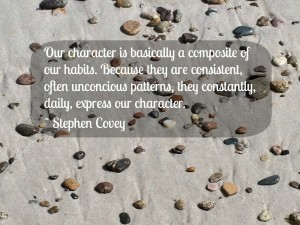Most mornings I get up and write in my journal. I try to write a combination of things – what I am grateful for (and there’s a lot) but also, the honest feelings I’m having about whatever is going on in my life, untethered emotions I’m not quite sure about, fears, insecurities – all the “junk” that runs around in my mind—probably in your mind too. Getting it on paper takes it out of my mind and makes it discernible. I can look at it and ask myself, “How true is that really?” Meaning, how justifiable are my feelings?—and I can put it in perspective. Mostly.
Writing it all down also has the great benefit of acknowledging. When we push “negative” emotions down, they just fester. When you acknowledge the feelings that are there, look at them with honesty and conscious awareness, it changes them. When they are deep dark secrets, there is shame. There is confusion. There is judgment: “I shouldn’t feel that way.” “Why can’t I get over XX?”
When you write it down and look at it, it just is. When you can look at your feelings, fears, and worries without judgment, they tend to dissipate, even dissolve, because otherwise, they are the monster under the bed.
So much of the positive thinking movement (don’t get me wrong! I’m a big fan of pivoting your thinking!) is just about thinking or wishing your life into abundance. It just doesn’t work that way. Of course you need to change your negative thoughts into positive ones. But you also need to acknowledge what is going on – and what you can do about it.
When we just reiterate affirmations of how wonderful life is, and truthfully, you’re having a shitty day, it just doesn’t jibe with your subconscious beliefs of unworthiness, insecurity, fears, worry. Please understand: wallowing in victimhood is the worst thing you can do on these days. Writing a gratitude journal is one of the best things you can do. But thinking there’s something wrong with you for having “negative” thoughts is simply not helpful –nor is it reality.
In fact, women tend to have more activity in the centers of the brain associated with worry. We are programmed to worry. So, there’s nothing wrong with you! It’s a journey of moving from worry into trusting that your higher intelligence, or Universe, has your best interests at heart. Your higher intelligence can take you from that primal fight or flight response of worry, into trust and faith in fulfilling a higher purpose. Trust that your fears are generally unfounded and a product of a false belief system programmed into your subconscious.
I’m also not saying it’s a “work hard” mentality – because I believe that abundance and joy can come just ‘cuz!
It really about two things:
AWARENESS
ACTION
The benefits of the morning journal ritual are many. It brings up all the junk that’s buried down below and raises your awareness. This is not simply a bitch-fest. This is writing down how you’re feeling, looking at it, and trying to discern why you feel that way and what you can do about it. Some days you will be in a joyful state – and obviously, that’s an awesome place to be. Some days it will tougher – and you will have to face the noise that is keeping you from being at your best.
Next – ideally – you act. Acting doesn’t mean leave your husband, quit your job, or fire your employee (although it certainly might). Action can be as simple as making a decision to raise your awareness of what triggers certain unhelpful emotions so that when you run into that situation, you can “pivot” off the old, conditioned, subconscious habits that got you there, and then, reinforce the better, more positive and forward moving thoughts.
I encourage everyone to read Julia Cameron’s The Artist’s Way. (You don’t need to be an artist or a writer!) She taught the world about “morning pages” – where you acknowledge what’s going on. She recommends 3 handwritten pages to “dustbust” all the things hanging out in the corners of your mind – whatever is “crossing your consciousness.” I highly recommend you try this practice. She says it’s like “meeting your shadow and taking it out for a cup of coffee.”



